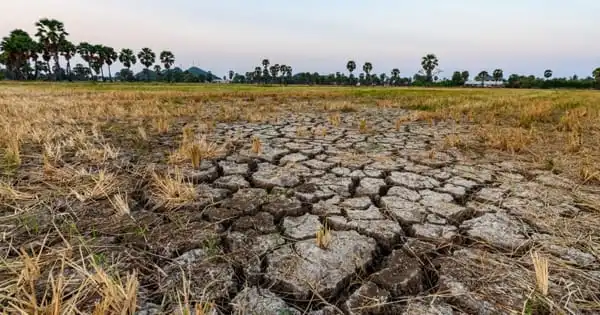Climate change disproportionately affects the poorest people, who live in vulnerable locations with insufficient resources to help them adapt or recover rapidly from shocks. As the effects of climate change worsen, it becomes more difficult to escape poverty.
We now have a window of opportunity to eradicate severe poverty and put in place the safety nets needed to keep poverty at bay while also reducing emissions. Poverty and climate change experts at the World Bank Group are collaborating with scholars from throughout the world to offer policy guidance and recommendations that can be helpful.
If the UN Sustainable Development Goal of lifting one billion people out of poverty is met by 2030, the impact on global carbon emissions will be small. That seems excellent; unfortunately, the fundamental reason for this is the large disparity in carbon footprints between rich and poor countries.
This result was reached by scientists from the Energy and Sustainability Research Institute of the University of Groningen (the Netherlands), in collaboration with colleagues from China and the United States. They based their findings on an examination of a new Consumption and Poverty Dataset developed in partnership with the World Bank. Their findings were reported in Nature Sustainability.
Our study suggests that the duty to reduce carbon emissions lies with the wealthier countries. We must provide poorer countries with the opportunity to bring their people out of poverty.
Benedikt Bruckner
The United Nations established the Sustainable Development Goals in 2015 as a “blueprint to achieve a brighter and more sustainable future for all.” The Paris Agreement on Climate Change was signed the same year, with the goal of curbing global warming. One of the Development Goals is to abolish extreme poverty and lift half of the poorest people in the world above the poverty line by 2030. This will have an effect on carbon emissions, though predictions of how much of an impact it will have are not very accurate thus far.
Consumption
As part of a Master’s research project, Benedikt Bruckner, a Master’s student in Energy and Environmental Sciences at the University of Groningen, researched the literature on this topic and recognized that he might be able to make a more accurate prediction. Klaus Hubacek, his supervisor and Professor of Science, Technology, and Society, had access to a new and extremely precise dataset on consumption developed in partnership with the World Bank.
‘At the moment, only a portion of it is made public. ‘However, because we helped shape its construction, we were allowed to employ the entire set,’ Hubacek continues. This comprehensive World Bank Consumption Dataset separates 201 different expenditure categories in 116 different nations, comprising roughly 90% of the world population.

Bruckner used data to calculate the carbon impact of different groups’ spending in these countries in unprecedented depth. He also provided each of these countries’ national poverty lines. ‘With this knowledge, I was able to quantify what the effect of poverty alleviation would be on carbon emissions when someone moved from a spending group below the poverty line to one above it,’ he continues. Bruckner employed an environmentally extended multi-regional input-output technique to include emissions from the global supply chain in addition to those calculated at the national level.
Inequality
Using this strategy, Bruckner might account for the fact that crossing the poverty line in a rich country would result in a larger change in the carbon footprint than crossing the poverty line in a poor country. His research found that bringing over one billion people out of poverty would boost global carbon emissions by 1.6 to 2.1 percent. ‘The explanation for this is a big disparity in carbon emissions,’ Bruckner argues. Total emissions from the richest 1% of the world’s population are actually 50% greater than those from the lowest 50%.
The good news is that when working to elevate people out of poverty, we don’t have to worry about carbon emissions. The bad news is that a tiny percentage of wealthy individuals are responsible for the majority of the carbon emissions that are causing global warming. ‘In Europe, the average person emits roughly six tonnes of carbon each year,’ says Hubacek. However, the majority of poor individuals release less than one tonne of CO2. And the world’s super-rich emit more than a thousand tonnes of CO2.’ Previous research by his group and others demonstrates that when income rises, so does consumption of products and, as a result, carbon emissions.
Responsibility
All of this effectively means that in order to meet the Paris Agreement goals, rich countries will have to lower their consumption of commodities and, as a result, their carbon emissions. ‘The only solution is to consume less,’ adds Hubacek. It is unrealistic to believe that economic growth can be separated from carbon emissions. ‘Only a few of the world’s wealthiest nations have achieved this decoupling from carbon emissions. But there are other boundaries we must not cross, such as biodiversity loss. ‘Technology is not going to save the day.’ ‘Our study suggests that the duty for reducing carbon emissions lies with the wealthier countries,’ Bruckner adds. We must provide poorer countries with the opportunity to bring their people out of poverty.’





